
NGS’ NG/LNG SNAPSHOT – APRIL 2019, VOLUME II
National News Internatonal News
NATIONAL
|
City Gas Distribution & Auto LPG Natural Gas / Pipelines / Company News Policy Matters/Gas Pricing/Others
|
SNAPSHOT: NATIONAL
 Electric Mobility
Electric Mobility
Electric vehicle market condition report of Kerala
 Electric Vehicle market is growing rapidly in the country due to its Eco-friendly nature and cost-effective features. Many state governments have already announced EV policies and schemes. Kerala is said to be the most literate State in India.
Electric Vehicle market is growing rapidly in the country due to its Eco-friendly nature and cost-effective features. Many state governments have already announced EV policies and schemes. Kerala is said to be the most literate State in India.
read more
The government is taking many initiatives to promote e-mobility in India. Kerala government has an EV population target of 1 million EVs by 2022. By 2020, a pilot Fleet of 200,000 two-wheelers, 50,000 three wheelers, 1000 goods carriers, 3000 buses, and 100 ferry boats is targeted. The government is committed to promoting shared mobility and clean transportation balancing of the peak and off-peak power demand for the electric utility (KSEBL), Operational efficiency and savings for the transport utility (KSRTC), pollution reduction from fossil fuels; The strategic intent to boost hardware and software manufacturers in the State; Managing the electricity grid; Upgrading the bus transport fleets; Industrial growth; Transition safety. The electric vehicles having battery packs of below 120V is considered as the light EV includes the two-wheelers, three-wheelers, and some car models also. Fast Charging and swapping stations will be established in all cities. KSEB will setup battery charging stations. The policy aims at improving affordability and acceptance leading to the adoption of electric vehicles through the following strategic initiatives.
Source: elctricVehicles.in
show less
The government is taking many initiatives to promote e-mobility in India.
Kerala government has an EV population target of 1 million EVs by 2022. By 2020, a pilot Fleet of 200,000 two-wheelers, 50,000 three wheelers, 1000 goods carriers, 3000 buses, and 100 ferry boats is targeted.
read more
The government is committed to promoting shared mobility and clean transportation balancing of the peak and off-peak power demand for the electric utility (KSEBL), Operational efficiency and savings for the transport utility (KSRTC), pollution reduction from fossil fuels; The strategic intent to boost hardware and software manufacturers in the State; Managing the electricity grid; Upgrading the bus transport fleets; Industrial growth; Transition safety. The electric vehicles having battery packs of below 120V is considered as the light EV includes the two-wheelers, three-wheelers, and some car models also. Fast Charging and swapping stations will be established in all cities. KSEB will setup battery charging stations. The policy aims at improving affordability and acceptance leading to the adoption of electric vehicles through the following strategic initiatives.
Source: elctricVehicles.in
show less
Electric vehicles sales report in India-March 2019
As we all know electric vehicles (EV) market is growing rapidly every day. To know the exact sales value, the EVs sales report is the best source to know the market potential in India.
read more
As the Indian government is taking many initiatives such as deploying EVs in government offices and making the use of EVs by providing incentives, subsidies, allotting parking spaces, charging infrastructures, etc.
According to FAME INDIA reports as of 31st March 2019.
2,78,730 Electric Vehicles were sold in India, with top sales coming from – Maharashtra with 36018
Gujarat with 31576, Uttar Pradesh with 28926, Haryana with 25537, Delhi with 20168, Tamil Nadu with 17817
The total number of EVs sales in the month of March was 11,920. And the total number of Electric Vehicles sold in India till March 31st is 2,78,730.
Source: electricvehicles.in
show less
SNAPSHOT: NATIONAL
 Natural Gas / Pipelines/ Company News
Natural Gas / Pipelines/ Company News
PNGRB scanning EWPL records after reports of laundering of $1.2 billion
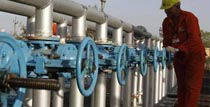 East West Pipeline, previously known as Reliance Gas Transportation Infrastructure, is owned by billionaire Mukesh Ambani. Taking cognisance of reports of laundering of $1.2 billion by East West Pipeline (EWPL)
East West Pipeline, previously known as Reliance Gas Transportation Infrastructure, is owned by billionaire Mukesh Ambani. Taking cognisance of reports of laundering of $1.2 billion by East West Pipeline (EWPL)
read more
with the help of a Dutch vendor which over-invoiced for services during construction of a gas pipeline, the Petroleum and Natural Gas Regulatory Board (PNGRB) has started a probe into the matter. The regulator is digging out old files to look into the history of the project, sources said. East West Pipeline, previously known as Reliance Gas Transportation Infrastructure, is owned by billionaire Mukesh Ambani. Last month, Canada-based Brookfield-led India Infrastructure Trust ‘agreed’ to buy EWPL for Rs 13,000 crore. The Fiscal Intelligence and Investigation Service and Economic Investigation Service of the Dutch government last week arrested three former employees of Netherland-based A Hak, alleging that they took payments of up to $10 million for showing inflated figures on the sales of materials and services to EWPL. The three were later released. About $1.2 billion is alleged to have been laundered in the process and diverted through a maze of businesses across multiple countries to Singapore-based Biometrix Marketing, a company allegedly having links with Reliance Industries (RIL). RIL has, however, categorically denied the allegations stating: “RIL or any of its subsidiaries neither set up any gas pipeline in 2006, nor have contracts with any Netherland company for setting up of any gas pipeline and hence the report cannot relate to RIL.” EWPL has also denied the having links with the reported money laundering case. According to a former member of PNGRB, in case the allegations are true, the tariff of the gas pipeline would have increased affecting prices paid by customers. “If capital cost is high, it increases tariff,” said the member. While ascertaining tariff, the actual bills for purchase of materials, machinery and technology are checked and total amount is considered. It is only for future projections of cost that a discounted cash flow model is used. “There is no benchmark for cost of pipelines as each one is unique in terms of geography, terrain and technology used. And that is why one has to rely on authenticity of bills submitted,” said the member, adding that in case any foul play is found, the tariff of the pipeline will likely be reduced.
show less
ONGC gas output jumps 6.5 pc to record high in FY19
Reversing years of decline, state-owned Oil and Natural Gas Corp (ONGC) has reported a record 6.5% jump in natural gas production to 25.9 BCM in the fiscal year ended March 31, 2019,
read more
as it doubles up efforts to raise domestic output to curb imports. Natural gas production from ONGC-operated nomination fields, NELP blocks and joint venture assets reached 25.819 BCM in 2018-19 as compared to 24.61 BCM output in the previous fiscal, ONGC Chairman and Managing Director Shashi Shanker said here. The company is on course to produce 42 BCM by end of fiscal 2022, when its prized KG basin discoveries will come on-stream. A bulk of the output in the 2018-19 financial year came from fields that were given to ONGC on nomination basis. Gas output from these rose to 24.683 BCM against 23.43 BCM in the previous 2017-18 fiscal. There has been a marginal increase in the New Exploration Licensing Policy (NELP) fields also from 0.054 BCM to 0.073 BCM. The growth rate was higher than the global average of 3-4 per cent year-on-year. Shanker said, gas sales also recorded an impressive increase during the year with sales (provisional) standing at 20.472 BCM against the sales of 19.494 BCM in 2017-18. During 2018-19, the company has, for the first time in its six-decade-old history, witnessed the highest ever gas production of 71 MMSCMD in November 2018. ONGC, he said, is taking all measures to sustain the production level and then grow further as per the company’s operational blueprint.The growth in output was largely contributed by C-26 Cluster fields, Daman and Vasai East fields in the western offshore as well as sub-sea well S2AB in the eastern offshore, he said adding ONGC has charted out a plan to double the gas production at 42.7 BCM by 2021-22. It is investing Rs 57,000 crore – one of the highest investments in the world in gas projects – in the high potential KG-DWN-98/2 project in the Bay of Bengal as well as in developing other discoveries on off the west coast. First gas from the KG-DWN-98/2 project is targeted for end-2019 and peak output is envisaged at 16.56 MMSCMD by 2022.
Giving details of projects that contributed to the increase, he said the incremental production came from Daman Offshore in the West as well as S1 Vashishta in the eastern offshore. Some of the onshore fields too saw the trend of falling output reversed. The Daman project has been completed at an investment of Rs 6,086 crore for a production profile of 26.93 BCM over a period of time. The project contributed 4.5 MMSCMD last fiscal. Similarly, ONGC has drawn an investment plan of Rs 5,725 crore for Vashishta and S1 for total gas production of 14.61 BCM. Current production from the project stands at 3 MMSCMD. One of the major breakthrough On-shore projects is Tripura Gas Project for which an investment plan of Rs 5,000 crore is being drawn up to recover 49.37 BCM gas up to the profile period. Current gas production from the block is 4.5 MMSCMD.
https://www.hellenicshippingnews.com/ongc-gas-output-jumps-6-5-pc-to-record-high-in-fy19/
show less
GAIL’s Kochi-Mangaluru pipeline hits roadblock again
Earlier it was the public protests in the Malabar region that had held up the project.
read more
The long-awaited commissioning of the Kochi-Mangaluru natural gas pipeline is likely to miss the target date of May because of the reported delay in carrying out river-crossing works at the Chandragiri and Netravati rivers in Kasargodu and Mangaluru. Earlier it was the public protests in the Malabar region that had held up the project. It is more than five years since the LNG terminal of Petronet LNG was commissioned in Kochi. GAIL (India) Ltd was entrusted with the responsibility of laying the 550-km pipeline from Kochi to Mangaluru. The deadline for completion of work was December 2018, but was extended to March following the Kerala floods and later to May, said MP Sukumaran Nair, Director of the Kochi-based Green Technology and Management. Admitting to the delay in civil works at river crossings, highly placed sources in the industry said the terrain is different and because of the rocky riverbeds, the horizontal directional drilling (HDD) to lay the pipelines under water is getting delayed. Because of this, the target date for mechanical completion of the work may be extended to June. “There is no point in coming out with lame excuses of technical difficulties at this juncture when the work was awarded in 2016. It is understood that the GAIL entrusted the work to a private contractor only a couple of months back and this may lead to disruptions in project commissioning on time,” a source said.
show less
SNAPSHOT: NATIONAL
 Policy Matters/Gas Pricing/Others
Policy Matters/Gas Pricing/Others
India: Core sector growth slows down to 2.1% in February
 The growth of eight core industries slowed down to 2.1% in February largely due to a fall in crude oil and petroleum refinery production and stagnant performance of the electricity sector.
The growth of eight core industries slowed down to 2.1% in February largely due to a fall in crude oil and petroleum refinery production and stagnant performance of the electricity sector.
read more
The overall-growth of the eight core sectors, which also include coal, natural gas, fertiliser, steel and cement, in the April-February 2018-19 period, was 4.3%. The sectors had expanded to 5.4% in February last year. According to Madan Sabnavis, Chief Economist, CARE Ratings: “While the base effect is a part of the explanation (for slowdown), it is also true that this has not held back growth in cement and steel which contended with the same base effect. Quite clearly in the infrastructure space there is limited activity which is being spear-headed by the government especially in roads, railways and urban development. Private sector involvement remains fragile as of now.” The slowdown is likely to dampen the Index of Industrial Production (IIP) for the month as the eight core sectors account for more than 40% of weight of items included in the index. Cement production increased by 8% in February and coal by 7.33%. Steel production increased by 4.9% during the month. Natural gas production increased by 3.8 per cent and crude declined by 6.1%. Fertiliser production increased by 2.5% in February while the electricity sector grew by 0.7%. 2018. Cumulative electricity generation increased by 5.4 per cent during April to February.
https://www.hellenicshippingnews.com/india-core-sector-growth-slows-down-to-2-1-in-february/
show less
Government defers oil block bid deadline by a month to May 15
The government had in January offered 14 blocks in OALP-II bid round and a month later offered another 23 oil and gas blocks and coal-bed methane (CBM) blocks in third round.
read more
The government has again deferred the last date for bidding for oil and gas exploration blocks offered under the Open Acreage Licensing Policy (OALP) by over a month to May 15. Last date for OALP bid round II and III, which are running almost concurrently, was April 10 but has now been pushed back. “Bid submission closing date for OALP Bid Round II & III stands extended up to May 15, 2019,” upstream regulator DGH said in a notice. April 10 was also the bid deadline for the 23 oil and gas and CBM blocks offered in the third round, which was launched on February 10. OALP-II bid round was delayed by six months and its launch came barely a month before the third round. Officials said OALP-II and OALP-III will run concurrently. Oil Minister Dharmendra Pradhan had at the time of launch of OALP-II bid round on January 7 stated that an investment of about Rs 40,000 crore is expected in the prospecting of oil and gas in blocks offered. In the first round of OALP last year, as much as Rs 60,000 crore was committed in the exploration of oil and gas in 55 blocks or areas. In the third round, the government is expecting up to USD 700 million (about Rs 49,000 crore) of investment that it hopes will help raise domestic output and cut imports. India had in July 2017 allowed companies to carve out blocks of their choice with a view to bringing about 2.8 million sq km of unexplored area in the country under exploration.
Blocks are awarded to the company which offers the highest share of oil and gas to the government as well as commits to doing maximum exploration work by way of shooting 2D and 3D seismic survey and drilling exploration wells. The new policy replaced the old system of government carving out areas and bidding them out. It guarantees marketing and pricing freedom and moves away from production sharing model of previous rounds to a revenue-sharing model, where companies offering the maximum share of oil and gas to the government are awarded the block.
show less
SNAPSHOT: NATIONAL
 LNG Development and Shipping
LNG Development and Shipping
LNG imports fell 9.1% despite declining prices’
Liquefied Natural Gas (LNG) imports fell 9.1% during February 2019, despite global prices falling, which bucks the established trend in India where LNG imports rise when prices fall, according to a report by India Ratings and Research (Ind-Ra).
read more
This change in import behaviour could be explained by the dual trends of increased production and decreased consumption within India, the report added. “LNG imports have been gradually declining since November 2018 and fell 9.1% year-on-year to 68 MMSCMD during February 2019,” the report said. “On the other hand, the Henry Hub prices reduced gradually to $2.7/MMbtu in February 2019 from $4.0/MMbtu in November 2018.” “This is in contrast to the historical trends seen where LNG imports have increased on a reduction in Henry Hub prices,” the report added. According to Ind-Ra, whose analysis is based on data from the Ministry of Petroleum and Natural Gas, natural gas production rose 3.3% in February 2019 compared to a year earlier. While ONGC registered an 8.5% increase in natural gas production, Oil India saw a 2.7% fall; private and joint venture fields saw a more drastic fall in production of 14%. “Natural gas consumption decreased 2.2% year-on-year in February 2019,” the report said. “On a cumulative basis, natural gas consumption was up 2.6% year-on-year during April-February 2019.”
show less
Why it’s becoming tough for GAIL to profit by selling gas
 A fall in prices of liquefied natural gas has made it difficult for the nation’s largest gas distributor to sell the commodity at a profit in the domestic market. GAIL (India) Ltd. buys LNG at contracted prices in the international market and
A fall in prices of liquefied natural gas has made it difficult for the nation’s largest gas distributor to sell the commodity at a profit in the domestic market. GAIL (India) Ltd. buys LNG at contracted prices in the international market and
read more
sells at prevailing rates in the domestic market a business that generates 70-75% of its revenue. But while selling prices have tumbled, buying prices remain high. The Singapore liquified natural gas prices the benchmark LNG prices for Asia have declined more than 60% to $4.2 per MMBtu in the last six months, according to Bloomberg data. That’s because of a supply glut and high inventory in North Asia. GAIL has three active long-term LNG contracts to buy gas two with the U.S. and one with Russia. The landed cost of U.S. LNG, which contributes more than 69% of its import volumes, in India is at a 25% premium to the Singapore spot price. For GAIL, the contracted price is 115 percent of the Henry Hub prices the U.S. benchmark along with $3 per MMBtu of fixed fees and transportation charges of $1.5-2 per MMBtu. GAIL, however, has the option to mitigate this risk by either hedging or swapping or selling these contracts. A depressed spot market may lead to losses on unhedged contracts and hurt GAIL’s gas trading profits as spot prices remain well below the landed U.S. LNG prices in 2019, according to Vikash Jain, oil and gas analyst at CLSA. Though the natural gas trading business contribute the most to GAIL’s revenue, its contribution to the operating income varied depending on the pricing in the last one year. For the first nine months ended December, the trading business, on an average, contributed close to 30 percent to the total earnings before interest and tax due to favourable pricing. But that may fall in the March quarter as the cost of importing gas from the U.S. was higher than spot prices in Asia. Shares of GAIL have declined nearly 5% in the last six months as the pricing differential impacted its business. That compares with more than 6% gain in the benchmark NSE Nifty 50 Index.
https://www.bloombergquint.com/markets/why-its-becoming-tough-for-gail-to-profit-by-selling-gas
show less
H-Energy plans to commission West Bengal LNG terminal by May 2021
Bengal Concession Private Limited (BCPL), an arm of H-Energy, is planning to commission its upcoming West Bengal LNG Re-gasification terminal (RLNG) terminal by May 2021 at the cost of Rs 1,500 crore,
read more
the company said in an application to the environment ministry. BCPL intends to develop a small scale LNG storage and regasification terminal on the banks of Hooghly River, Matriramchak village, East Medinipur, West Bengal, according to the application reviewed by ETEnergyWorld. “The proposed land for the project site was procured in two parcels. One part is vacant land which was earlier leased for setting up a shipbuilding yard. However, no construction activity was initiated. The same land in being acquired by BCPL on a long term lease. The second part of the land is currently being used as a brick kiln,” the company said. The LNG terminal will have an initial regasification capacity of 1.5-3 MMTPA, which will be expanded to 5 MMTPA in the future. As part of the project the company plans to set-up two jetties on the bank of the Hooghly river to receive LNG, which will be stored at two onshore storage tanks with a total capacity of 60,000 cubic meter each and a provision to expand it by an additional 30,000 cubic meter. The company said in the application it plans to lay multiple pipelines from the site to end-users and will also house LNG truck loading facility to transport natural gas. The LNG truck loading facility will initially have 4 to 10 truck loading bays, with each loading bay designed to export 50 cubic meter per hour of LNG. H-Energy plans to develp a 24-inch, 250 Km natural gas pipeline from Kanai Chatta, East Medinipur to Shrirampur, near Bangladesh border of West Bengal. The pipeline is expected to supply natural gas to major power customers in West Bengal and Bangladesh, with a targeted dated of commissioning by first quarter of 2021. H-Energy is at an advanced stage to start full commercial operations at its 4 MMTPA LNG terminal at Jaigarh, Maharashtra.
show less
India’s H-Energy seeks 15 cargoes for Q4 of 2019 delivery
India’s H-Energy is seeking to buy 15 cargoes of liquefied natural gas (LNG) for delivery over the fourth quarter of 2019 and throughout 2020,
read more
two industry sources said. The tender opened on March 31 and is expected to close in mid-April, they added. H-Energy is looking to import one cargo per month over the 15-month period.
Source: Indian Oil & Gas/Reuters
show less
|
Natural Gas / Transnational Pipelines / Others LNG as a Marine Fuel / Shipping Technological Development for Cleaner and Greener Environment Hydrogen & Bio-Methane
|
SNAPSHOT: INTERNATIONAL
 Global LNG Development
Global LNG Development
Global LNG-Asian prices climb for a second week as buying interest returns
Asian spot prices for liquefied natural gas (LNG) rose for a second week, as interest from buyers returned amid a wide price disparity between spot and term prices. Most long-term LNG contracts in Asia are linked to oil prices and
read more
rising crude prices are likely causing buyers to seek more spot cargoes though no firm purchases could be confirmed, four trade sources said. Spot prices for May delivery to Northeast Asia LNG-AS climbed to $5.25 per MMBtu this week, up 75 cents, or nearly 17%, from the previous week, trade sources said. Prices for cargoes to be delivered in June are estimated to be higher at around $5.50 per MMBtu, the sources added.
Source: LNG Global[Edited]
show less
Egypt to double LNG export capacity in 2019
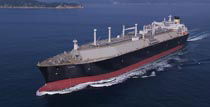 Egypt will nearly double its liquefied natural gas export capacity to 2 billion cubic feet per day by the end of 2019, and
Egypt will nearly double its liquefied natural gas export capacity to 2 billion cubic feet per day by the end of 2019, and
read more
also plans to collaborate with Saudi Arabia in exploring hydrocarbon reserves in the Red Sea. “What we are exporting currently as of today is 1.1 bcf per day and we expect that by the end of the year this figure will go up to 2 bcf per day, and this is when we resume the operation of the Damietta plant. The second plant is expected to operate within this year,” Tarek El Molla, Egypt’s Petroleum and Mineral Resources Minister told The National on the sidelines of the World Economic Forum in Jordan. Egypt, the Arab world’s biggest country by population, has seen economic revival on the back of massive discoveries offshore the Eastern Mediterranean. The finds led by the giant Zohr gasfield, which was discovered by Italian energy company Eni in 2016, have turned Egypt’s fortunes from being an importer to a net exporter of gas. The country ended all of its LNG imports last year and has talked about developing a regional gas hub. The North African country state has since begun reviving its liquefaction plants, with the one at Idku exporting 800 million cubic feet of LNG in February, more than double the volumes it exported from the facility in 2018. Egypt has since invited the likes of Exxon Mobil and Shell after one of its largest concession rounds, which witnessed healthy appetite from international majors for onshore and offshore exploration blocks. Egypt expects production from its Zohr resource increase to more than 3 bcf day this year. The country will also ramp up output from the North Alexandria West Nile Delta concessions operated by BP this month. Production is expected to reach 700 mcf per day with the coming on stream of 400 mcf per day, he said. Egypt, which has ambitions of becoming a gas hub in the Eastern Mediterranean will look to raise capacity on its LNG plants at Idku, Damietta and Ain Sokhna.
https://www.hellenicshippingnews.com/egypt-to-double-lng-export-capacity-in-2019/[Edited]
show less
Tokyo Gas, Shell sign LNG deal linked to coal pricing in rare move
Japan’s Tokyo Gas said it has signed a deal with Royal Dutch Shell for the long-term supply of liquefied natural gas (LNG), partly using a coal-linked pricing formula in an unusual move for an Asian LNG buyer.
read more
This is believed to be the first time a Japanese buyer is using a coal-based pricing index in an LNG contract, industry observers said. The companies signed a heads of agreement for Tokyo Gas to buy 500,000 tonnes a year of LNG for 10 years from April 2020. Japan’s second-biggest LNG buyer is stepping up its efforts to diversify its supply sources and reduce costs. A pricing formula based on coal indexation will be used for part of the supply, the spokesman said, while the rest will be priced off conventional gas- and oil-linked indexes. Tokyo Gas did not give the volumes to be done under each pricing method. “With our long-term relationship and joint consideration, we were able to achieve an innovative agreement that would enhance further diversification of price indexation pursued by Tokyo Gas,” Tokyo Gas Managing Executive Officer Kentaro Kimoto said in a statement. Earlier this week, however, two U.S.-based firms announced alternative pricing options for contracts being signed for their new projects, ahead of an expected flood of supplies hitting global markets this year. The deal follows a series of innovations in LNG contracts announced at the LNG2019 conference in Shanghai, said Nicholas Browne, a Wood Mackenzie analyst. “Coal remains the largest competitor to gas in the power sector in Asia. If the index is competitive, this could be an important step for enabling LNG and utilities to better compete with coal,” Browne said. As a gas and electricity provider trying to build its share in a competitive and liberalised power market, Tokyo Gas needs to compete with cheaper baseload coal-fired power, he said. Tokyo Gas together with Japan’s Idemitsu Kosan and Kyushu Electric Power said in January they had given up their plan to build a 2 gigawatt (GW) coal-fired power station in Chiba, citing economic reasons. “This deal may help them compete with cheaper coal based generation even though they don’t have much coal generation,” Browne said. Shell will be supplying LNG to Tokyo Gas from its global LNG portfolio, rather than from specific LNG projects. “Coal indexation in LNG contracts will be particularly relevant for Japanese buyers, not least because coal is an integral part of Japan’s power-generation mix,” said Abhishek Kumar, head of analytics at Interfax Energy in London. “The move also demonstrates that some Japanese buyers are keen on spreading the price risk associated with LNG by diversifying price linkages to a variety of fuels,” he said.
show less
LNG will be big part of China-U.S. trade once tensions resolved –CNOOC
Liquefied natural gas (LNG) will become a big part of China-U.S. trade once tensions are properly resolved between the two countries, a senior executive from China National Offshore Oil Corp (CNOOC) said on Wednesday, April 3.
read more
LNG will also continue to dominate China’s natural gas imports, already accounting for 60 percent of its gas imports last year, said CNOOC Vice President Li Hui on the sidelines of the LNG2019 conference in Shanghai. CNOOC is China’s largest investor in LNG facilities and its largest buyer of the super-chilled fuel. China has since 2017 become the world’s second-largest LNG buyer after Japan as gas demand surges under a government push to switch users from coal to cleaner burning gas. China and the United States, the world’s top two economies, are moving closer to a final trade deal after months of tough negotiations. If the trade spat is resolved, China could increase U.S. LNG, crude oil and soybean purchases to help narrow Washington’s trade deficit with Beijing. “For China-U.S. LNG trade you have to look at the big trends, and at the trade frictions. If this problem can be solved appropriately, LNG trade could be very big,” Li said. Sinopec Corp, China’s No.2 oil and gas firm, is ready to sign a 20-year LNG supply agreement with Cheniere Energy once the two countries end their trade dispute, Reuters has reported. The United States, the world’s fastest-growing gas exporter thanks to surging output from shale fields, is still facing competition from rival exporters such as Qatar and Australia. Peter Coleman, chief executive of Australia’s Woodside Petroleum, told reporters in Shanghai that the endgame in a well-supplied global LNG market is “all about prices”. “China has learned from the current issues with the United States that diversity of supply is very important,” he said.
show less
Shell signs SPA for 2 MMTPA offtake from Rio Grande LNG project in Texas: NextDecade
Shell further diversified its access to North American LNG volumes with a long-term offtake agreement Tuesday that provides support for NextDecade’s proposed export terminal in Texas. The move, announced during the LNG2019 conference in China,
read more
will help the portfolio player protect itself against volatility in the market in terms of pricing and shipping costs, while also acting as a hedge against the potential that one or more of the projects it is involved in does not go forward or is delayed. With a forecast of tightening global supply in the early to mid-2020s, US LNG developers, in particular, are competing with each other for commercial deals with end-users in Asia, Europe, the Middle East and Latin America. Buyers these days are pressing for more flexibility on terms, including cost, length of contract and destination. Integrated majors like Shell are well suited for the next wave of projects, though more deals will be needed for many of the terminals to get built. For NextDecade, the deal couldn’t come at a more important time for the developer of the up to 27 MMTPA Rio Grande LNG terminal project in Brownsville, in the southernmost portion of Texas on the Gulf of Mexico. The 20-year sales and purchase agreement calls for Shell to buy LNG on a free-on-board basis starting from the commercial operation date of Rio Grande LNG, currently expected in 2023. Three quarters of the agreement will be indexed to Brent, with the rest indexed to US gas prices, including Henry Hub, CEO Matt Schatzman said during a briefing at the company’s booth at the conference. Shell becomes the first foundation customer for the project, but NextDecade will need more if it is going to proceed to a final investment decision on up to three liquefaction trains, or approximately 13.5 million mt/year of LNG, as part of the first phase of the project. FID is currently targeted to occur by the end of September. “We expect to announce more SPAs in the coming months,” Schatzman said.
show less
Total, Tellurian sign deals to develop Driftwood LNG project
They have signed a non-binding heads of agreement (HOA) where Total will invest in Driftwood Holdings and offtake 2.5 MMTPA of LNG.
read more
French oil and gas major Total SA and U.S. company Tellurian Inc have signed several deals to develop the Driftwood LNG project in Louisiana, they said on Wednesday, March 28. The HOA will include both companies entering into a binding sales and purchase agreement (SPA) to take 1.5 MMTPA of LNG from Tellurian Marketing’s LNG offtake volumes from the Driftwood project. It will also include a $500 million equity investment by Total in Driftwood LNG and the purchase of an additional 1 MMTPA of LNG from the proposed project. The SPA is for the purchase of LNG on a free-on-board (FOB) basis for a minimum of 15 years, at a price based on Platts Japan Korea Marker (JKM). Total will also buy about 20 million shares of Tellurian common stock for $200 million. The agreements are subject to relevant regulatory approvals and to a final investment decision on the Driftwood LNG project, which is expected to be made by Tellurian in the first of this year.
show less
Global LNG demand to grow 2 pct a year for next 15 years – Qatar Petroleum CEO
Global demand for liquefied natural gas will grow at 2% a year for the next 15 years, the chief executive of Qatar Petroleum said at the LNG2019 conference in Shanghai.
read more
Growth in developed markets such as Japan and South Korea will be moderate, while there will be some growth in Europe after years of stagnation, said Saad Al-Kaabi, Qatar’s minister of state for energy affairs as well as president and chief executive of Qatar Petroleum. “China, along with India, will continue to lead Asia as the main drivers behind the growth of global LNG demand,” Al-Kaabi said at the conference, according to a press release later issued by Qatar Petroleum. Qatar has shipped more than 50 MMT of LNG to China, more than 22% of China’s imports of the fuel over the past ten years, he said. Al-Kaabi said demand for gas will continue to rise due to the growing concerns over the environment and climate change, and widespread moves towards using cleaner and more cost-effective fuels. “While some see natural gas as a transition fuel, we believe it is a destination fuel. It is the cleanest of all fossil fuels. It is reliable, affordable, and the fuel of the future,” he said. Qatar Petroleum also said in the press statement that it has awarded a number of contracts related to its LNG expansion project aimed at increasing LNG production capacity from 77 MMTPA to 110 MMTPA by 2024. Main invitations for the engineering, procurement and construction contracts for the onshore facilities will be issued by the end of the month, according to the statement. Qualified shipyards will be invited to take part in a tender for building the LNG ships that will be required for its fleet for the expansion project, it also said. It has also begun construction at its joint-venture 16 MMTPA Golden Pass LNG export project in Texas in the United States, along with project partner Exxon Mobil Corp . The project is expected to be in operation by 2024.
show less
Polish Gas terminal speaks volumes
 Follow the flows or the planned flows of liquified natural gas (LNG) and you have a decent picture of how the emerging political order in Europe is being reconfigured.
Follow the flows or the planned flows of liquified natural gas (LNG) and you have a decent picture of how the emerging political order in Europe is being reconfigured.
read more
A case in point is the relationship between Poland and the U.S. Both have traditionally poor relations with Moscow, it is known. Both have fragile relations with Brussels under the leaderships of Donald Trump and Jaroslaw Kaczynski. And both have an interest in breaking Russia’s gas hold on Europe. As the Nord Stream II pipeline between Russia and Germany faces increasingly strong political headwinds, the search for alternatives sources of supply goes on within the EU and Poland’s LNG terminal in the northern port of Swinoujscie has become a crucial part of the picture. The Polish oil and gas company PGNiG said spot deliveries via the Swinoujscie terminal from the U.S. are set for April 3 and a cargo from Qatar on the long-term contract is scheduled for April 16. The number of spot supplies is rising,” a PGNiG spokesman said. “The upcoming delivery from the US will be the fifth spot supply this year already, whereas we have had four spot deliveries altogether in 2018. These are single deliveries based on the short-term contracts contrary to deliveries from mid- and long-term contracts we have with the Qatari and US companies. The deliveries from the long-term contract with Cheniere we have signed in late-2018 will commence later this year.” Sempra Energy also wants to become one of the largest LNG exporters in the U.S. and one of its clients will be Polish PGNiG. Port Arthur LNG with planned capacity of 12 MMTPA is to get the final investment decision in the first quarter of 2020, if it gets the right number of contracts. The first one is a PGNiG order from Poland for 2 MMTPA for 20 years from 2023. The Polish terminal’s regasification capacity is 5 billion m3 per year, but Polskie LNG plans to increase it to 7.5 billion m3, which would satisfy around 50% of Poland’s annual gas demand.
Poland is also planning the construction of new gas links to the Czech Republic and Slovakia (scheduled for 2019), Lithuania (2021) and with Denmark (2022). A new gas pipeline to Ukraine is also under consideration. Baltic-connector would allow imports of piped gas via a pipeline between Poland and Lithuania called GIPL, due to be completed by December 2021, which in turn could be connected to the planned Baltic Pipe linking Poland to Norway, via Denmark.
https://www.hellenicshippingnews.com/polish-gas-terminal-speaks-volumes/[Edited/Part]
show less
Indonesia’s Pertagas receives LNG from Kyushu Electric for Aceh storage
Pertagas, a gas unit under Indonesia state energy firm PT Pertamina, said on Friday, April 5, it has received this week the first liquefied natural gas (LNG) cargo for an international storage hub it has opened in Aceh.
read more
The cargo, which arrived on Tuesday, is owned by Japan’s Kyushu Electric Power and was shipped from Australia, Wiko Migantoro, Pertagas chief executive said on Friday. The 142,200 cubic meter cargo of LNG was the first the storage site has ever received, Pertagas said in a statement. Migantoro said the LNG hub has a three-year storage contract with Kyushu Electric. The LNG hub in Aceh on Sumatra island has two storage units with a combined capacity of 210,000 cubic meter, it said. Migantoro said the company is prepared to expand the capacity should there be more demand for storage. A Kyushu Electric spokeswoman said the storage facility can be used to adjust its LNG supply as demand for the fuel has been fluctuating due to the growth of renewable power generation. She declined to comment on how the company would deal with the stored LNG due to the confidentiality of the matter.
show less
Petronas well positioned to provide LNG to new markets
Petroliam Nasional Bhd (Petronas) is well positioned to provide its liquefied natural gas (LNG) to existing and new demand markets, as well as to emerging trading hubs, through its flexible and innovative LNG solutions.
read more
This is made possible due to the national oil company’s growing portfolio of LNG supply sources in Malaysia, Australia, Egypt and soon in Canada, it said in a statement on Friday.
https://www.hellenicshippingnews.com/petronas-well-positioned-to-provide-lng-to-new-markets/
show less
SNAPSHOT: INTERNATIONAL
 Natural Gas / LNG Utilization
Natural Gas / LNG Utilization
Natural Gas a “Real Alternative” to traditional fuels concludes Belgian study
 Belgium’s Commission for the Regulation of Electricity and Gas (CREG), being the federal body for regulating the electricity and natural gas market in that country, has published a report on the competitive position of natural gas used as CNG (compressed natural gas) and
Belgium’s Commission for the Regulation of Electricity and Gas (CREG), being the federal body for regulating the electricity and natural gas market in that country, has published a report on the competitive position of natural gas used as CNG (compressed natural gas) and
read more
LNG (liquefied natural gas) fuel for different vehicle types. CREG says the purpose of the study was to analyse, in complete independence and without value judgement, the market for natural gas as a fuel. It has been able to show that these fuels are more ecological (about 80 to 90 % less particulate matter and nitrogen oxides) and generally better economic alternatives than fossil fuels. This study focuses mainly on the economic aspect. For passenger cars and vans, the fuel cost of CNG is about 70% lower than that of fossil fuels, taking into account a lower price at the pump and lower consumption. Moreover, the fuel price of CNG is relatively similar to that of electricity. CNG appears to be generally more economical in comparison with both petrol and diesel and CNG fuel will be available from about 140 stations by end of 2019. The current business case is positive for CNG and LNG trucks, provided that sufficient kilometers are covered and that regional support measures (purchase premiums) are taken into account. CREG observes that the restrictive problems identified a few years ago, such as the limited power of vehicles and the number of service stations, have largely been solved. There are currently seven LNG stations in Belgium with ten other projects foreseen for 2019 and 2020. Unlike LPG vehicles, with which they are sometimes confused, CNG and LNG vehicles are mainly produced in a factory. The growth in the number of CNG and LNG stations in Belgium and in Europe makes it easier to rely on these alternative motorisations that are still relatively unknown. The Executive Summary goes on to explain two main elements that weigh economically on all vehicles analysed are the fuel price and the purchase price of the vehicle. Other elements, namely residual value and maintenance costs, are only important for the truck market. The study discusses technical and regulatory aspects, profitability analysis, and market development of refueling infrastructure and vehicles before reaching the conclusion that:
show less
Madrid will incorporate 36 CNG trucks with ECO environmental label
The Governing Board of the Madrid City Council approved the budget for the purchase of 36 trucks for the collection of organic waste with a total budget of 8,000,000 euros. These vehicles will serve to respond to the expansion of the organic waste collection to all districts,
read more
which began in November 2017. All vehicles will have natural gas propulsion and, therefore, ECO environmental category. To adapt to the specific needs of the districts in which the trucks will provide service, the acquisition of two different models is contemplated: 30 rear loading vehicles with 19 m3 capacity and six lateral loading vehicles with 22 m3 capacity. The trucks will serve in the districts of Centro, Retiro, Salamanca, Chamartín, Fuencarral – El Pardo, Moratalaz, Carabanchel, Usera and Barajas, where the daily selective collection of bio-waste will be progressively implemented as of November 2019. The collection of the organic fraction began in November 2017 with a pilot test in 17 pioneering zones. From this first experience, the service has been growing progressively to cover 12 districts today and serve a population of about 1,800,000 people. The final purpose is to mitigate the adverse impact of waste on human health and the environment, improving efficiency in the use of resources, a goal contemplated in the Waste Reduction Strategy of the city of Madrid. The acquisition of these ECO-labeled vehicles is part of the Plan A of Air Quality and Climate Change in its point 18, which provides for the renewal of the municipal fleet with low emission vehicles. In this extremely positive scenario for sustainable mobility, where more and more Spanish municipal fleets add vehicles powered by natural gas, AltFuels Iberia 2019 will take place on 11-14 June at IFEMA Trade Center, Madrid. It will be an event consisting of first level conferences and exhibition of vehicles of all kinds, refueling stations, components, plants, road and marine engines, as well as the entire universe of the alternative fuels industry with the latest technological developments, multiple options for networking, business and new advances. For more information, please contact info@altfuelsiberia.com.
show less
One of the main parcel companies in Spain adds the Fiat Ducato NP
Fiat Professional signed an agreement with GLS Spain, one of the main national parcel transport companies, through which FCA’s commercial vehicle brand offers special commercial conditions in the purchase of the Fiat Ducato Natural Power (NP).
read more
These conditions apply both to GLS and its entire network of affiliated agencies, which will allow it to add to its fleet a vehicle of reference in the sector. The Fiat Ducato NP features 140 HP and is propelled by a low-emission clean fuel, allowing GLS to be one of the pioneer transport companies in Spain in the introduction of CNG to its distribution fleet. GLS is fully aware of its environmental responsibility. In the framework of the ThinkGreen initiative, the company focuses on minimizing the ecological impact of transport. One of the key instruments in this context is urban logistics aimed at lightening the burden on the infrastructure of urban areas and reducing both emissions and noise. GLS Spain agencies, many of them located in the same or nearby center, in combination with bicycles and electric vans, will contribute to this. Natural gas has numerous environmental and economic advantages. It is a fuel that contributes to the improvement of air quality as a result of its very low emissions. The vehicles that run on this fuel have the ECO label of the General Direction of Traffic, benefiting from free accessibility to the center of the cities in episodes of high pollution, tax incentives and bonuses in regulated parking areas, among others. The agreement was signed on March 28 at FCA Spain headquarters by the representatives of both companies.
show less
Kinetrex Energy mobile LNG refueler earns “Driver of Change” award
Kinetrex Energy, a U.S. LNG supply company based in Indianapolis, Indiana, is the recipient of a 2019 “Driver of Change” award for its innovative mobile LNG fueling system.
read more
Greater Indiana Clean Cities Coalition recognizes fleets as part of its annual Clean Fleet Awards, and in this instance acknowledged Kinetrex for its fueling system which is designed to easily transport and fuel fleets with environmentally-friendly LNG. A mobile fueler provides a short or long-term LNG fueling solution for fleets and enables trucks to fuel onsite without a permanent station nor be reliant upon retail fuel costs. A company can try LNG within their own operation without an initial capital investment in infrastructure. Kinetrex offers a full-service, in-house team of financing, operations, and customer service to get fleet operators over the initial hurdles associated with switching fuels. Mobile LNG fuel systems are available for short or long-term lease. Companies realize the cost savings of wholesale LNG compared to diesel or any other fuel from day one. LNG has been the safest fuel on the market for many years and LNG produces much lower carbon emissions when compared to diesel. A company looking to expand their LNG fleet can also utilize a mobile fueler to compliment their existing fueling infrastructure. Mobile fuelers also be used on the edges of a transportation network to support a growing or evolving fleet. “We are proud to receive this award for our innovation in fueling transportation fleets,” said Craig Moore, COO of Kinetrex Energy. “By improving environmental friendliness and reducing costs in long-haul fleets, we are making an important contribution to the energy transition.”
Source: NGV Global
show less
B.C., Canada to phase out gas-powered vehicles by 2040
Legislation will make British Columbia leading jurisdiction in North America.
read more
The British Columbia government is introducing new legislation to phase out gas-powered vehicles that, if passed, will require the sale of all new light-duty cars and trucks to be zero-emission vehicles by 2040. Sixteen countries, including China, India, France, Japan and the U.K., have already set targets to eliminate the sale of gas-powered vehicles but B.C. will become the first jurisdiction in North America to set such a target. The legislation will also make zero-emissions vehicles more available for British Columbians, with requirements for automakers to reach a zero emissions vehicle sales target of 10% by 2025, 30% by 2030 and 100% by 2040. In June and July of 2018, Clean Energy Canada called all 322 dealerships in B.C. that qualify for the province’s electric vehicle rebate program and found that only 40 per cent of them have electric cars on their lots available to purchase. Most said the wait for an electric car would be three months to a year. The province of B.C. offers a rebate of $5,000 on electric cars, and the federal government announced in last month’s budget that it will offer a $5,000 rebate on electric vehicles under $45,000 meaning a car buyer in B.C. can qualify for up to $10,000 back. B.C.’s Scrap-It program also offers up to an additional $6,000 back if you’re trading in an older model gas vehicle. Andrew Weaver, leader of the B.C. Green caucus, applauded the proposed legislation as a critical step toward a low-carbon economy but said it is “deeply counterproductive” to advance such important policy the week after passing legislation that locks in subsidies for B.C.’s emissions-intensive liquefied natural gas industry. B.C. has the highest per capita adoption of zero-emission vehicles in Canada, with more than 17,000 electric vehicles on the road, averaging four per cent of new light-duty vehicle sales in 2018.
https://thenarwhal.ca/b-c-to-phase-out-gas-powered-vehicles-by-2040/[Edited]
show less
SNAPSHOT: INTERNATIONAL
 LNG as a Marine Fuel / Shipping
LNG as a Marine Fuel / Shipping
Independent study reveals LNG reduces shipping GHG emissions by up to 21%
 The independent study report launched today has revealed that Greenhouse Gas (GHG) reductions of up to 21% are achievable now from LNG as a marine fuel, compared with current oil-based marine fuels over the entire life-cycle from Well-to-Wake (WtW).
The independent study report launched today has revealed that Greenhouse Gas (GHG) reductions of up to 21% are achievable now from LNG as a marine fuel, compared with current oil-based marine fuels over the entire life-cycle from Well-to-Wake (WtW).
read more
It also confirms that emissions of other local pollutants, such as sulphur oxides (SOx), nitrogen oxides (NOx) and particulate matter (PM), are close to zero when using LNG compared with current conventional oil-based marine fuels. The study, commissioned by SEA\LNG and SGMF, was conducted by leading data and consultancy provider thinkstep according to ISO standards. The report, which has been reviewed by a panel of independent academic experts, is the definitive study into GHG emissions from current marine engines. Commenting on the report, SEA\LNG Chairman Peter Keller stated: “The Life Cycle GHG Emission Study is a long-awaited piece of the “LNG as a marine fuel“ puzzle. It not only confirms what we already knew in terms of LNG’s immediate impact on air quality, human health and its cleanliness, but clearly highlights the genuine, substantiated GHG benefits of using today’s marine engines capable of burning natural gas. Moving from current Heavy Fuel Oil (HFO) to LNG does reduce GHG emissions. LNG does contribute to the International Maritime Organisation (IMO) GHG reduction targets. And it is clear that LNG is the most environmentally-friendly marine fuel that is readily available and safe, both today and in the foreseeable future.” On an engine technology basis, the absolute WtW emissions reduction benefits for LNG-fuelled engines compared with HFO fuelled ships today are between 14% to 21% for 2-stroke slow speed engines and between 7% to 15% for 4-stroke medium speed engines. 72% of the marine fuel consumed today is by 2-stroke engines with a further 18% used by 4-stroke medium speed engines. Dr Oliver Schuller, Team Lead Energy & Mobility at thinkstep stated: “The main goal of this study was to provide an accurate report of the life-cycle GHG emissions from LNG as a marine fuel compared with conventional marine fuels.” This is a comprehensive report using the latest primary data to assess all major types of marine engines and global sources of supply with quality data provided by Original Equipment Manufacturers including Caterpillar MaK, Caterpillar Solar Turbines, GE, MAN Energy Solutions, Rolls Royce (MTU), Wärtsilä, and Winterthur Gas & Diesel, as well as from ExxonMobil, Shell, and Total from the supply side. It is quality assured in assessing the supply and use of LNG as a marine fuel according to ISO standards. And objective having been peer-reviewed by /leading academics from key institutions in France, Germany, Japan and the USA.”
show less
Nakilat showcases its shipping & maritime expertise at LNG2019 in China
Nakilat participated in the LNG2019 Conference and Exhibition that took place in Shanghai from 1 to 5 April 2019. In its 19th edition, the international conference and exhibition on LNG is among the largest LNG-centric events globally, attracting over 11,000 professionals from the energy industry.
read more
Being hosted in China, one of the leading importers of LNG worldwide, the event provides a strategic platform to discuss current industry topics and display the latest technological innovations. As the world’s leading transporter of clean energy, Nakilat was proud to be participating at LNG2019 and to showcase our shipping and maritime expertise at the event. In addition to its shipping services, Nakilat also provides integrated maritime solutions through its local joint ventures, offering ship repair, offshore repair and fabrication, as well as ship building at its world-class Erhama Bin Jaber Al Jalahma Shipyard located at Ras Laffan Industrial City, as well as towage, shipping agency, logistics and other maritime services. Nakilat’s active participation in such strategic global events comes as part of its vision to be a global leader and provider of choice for energy transportation and maritime services, in alignment with Qatar’s National Vision 2030 and towards adding strategic value to the shipping and maritime sector.
show less
China to build largest LNG carrier
China is building the world’s largest liquefied natural gas carrier with a capacity of 270,000 cubic meters to cope with the rising demand for the clean fuel in the nation, a top shipbuilder said on Tuesday,
read more
April2. Shanghai-based Hudong-Zhonghua Shipbuilding (Group) Co Ltd, a shipbuilding unit of China State Shipbuilding Corporation has joined hands with Norway-based internationally accredited registrar and classification society DNV-GL for construction of the carrier, company officials said during the 19th International Conference & Exhibition on Liquefied Natural Gas in Shanghai. Under the agreement, research and development work on the new vessel is set to be completed by the end of 2020. The two sides decided to go in for a supersized LNG carrier to account for the increasing clean fuel demand in the nation. Other reasons for using large-sized carriers was the limited number of LNG terminals in China’s coastal cities, long-haul voyages and the need to transport fuel in chilled containers.
https://seanews.co.uk/shipping/tanker/china-to-build-largest-lng-carrier/ [Edited]
show less
Furetank orders new dual-fuel vessel and sells ‘Fure Vinga’
Swedish shipping company Furetank Rederi AB has signed a contract for one 17,999 dwt dual-fuel product tanker at Avic Dingheng Shipbuilding. The agreement with the yard includes an option for one further vessel.
read more
It will also sell the Fure Vinga, its 17,999 dual-fuel product tanker which entered into service in 2018, to Canadian buyers. The new vessel will be identical with the series of six sister vessels built by Avic Dingheng Shipbuilding for the Gothia Alliance members Furetank Rederi AB, Rederi AB Älvtank and Erik Thun AB during 2018‐2019. All vessels are designed with special focus on minimal impact on the environment and have dual-fuel capability, run on Liquefied Natural Gas (LNG) and several features that reduce fuel and energy consumption resulting in extensively lower emissions of CO2, sulphur oxide, nitrogen oxide and particulate matter. The 149 m (LOA) Ice class 1A vessel with a cargo capacity of 20,306 cubic meters is scheduled to be delivered from the shipyard in the fourth quarter of 2020. Furetank Rederi AB has also signed an agreement to sell the Fure Vinga to Canadian buyers. The vessel will be delivered to her new owners during April 2019.
”In the year that has passed since the Fure Vinga was delivered we have had a lot of interest in our new vessels and the benefit they offer to the environment through reduced emissions and less noise”, explained Lars Höglund, CEO Furetank Rederi AB. “We are selling the vessel with mixed feelings, but the commitment from her new owners, who also trade in winter climate with stringent environmental regulations, is also a confirmation that we have succeeded when designing the Fure Vinga. To replace her in our fleet we have therefore decided to order at least one further vessel at Avic Dingheng.” The Gothia Tanker Alliance is a market platform for small and intermediate product tankers, operating 40 vessels in European waters.
Source: NGV Global
show less
First European LNG bunker station to open in July
 PitPoint.LNG’s Liquefied Natural Gas bunkering station to refuel inland waterway vessels is taking shape. Construction of the first European fixed bunkering station for LNG will be realized on Europe’s busiest waterway, the Rhine, in the port of Cologne (Am Molenkopf 17)
PitPoint.LNG’s Liquefied Natural Gas bunkering station to refuel inland waterway vessels is taking shape. Construction of the first European fixed bunkering station for LNG will be realized on Europe’s busiest waterway, the Rhine, in the port of Cologne (Am Molenkopf 17)
read more
later this year. With the planned opening in July 2019, the initiator PitPoint.LNG is taking an important step in making LNG available as a clean fuel for inland shipping. Whereas LNG-powered barges are now mainly supplied from road tankers, the arrival of this LNG bunkering station offers many advantages for inland shipping, such as more flexibility through 24/7 availability and a considerably shorter bunker time. The new LNG bunker station is part of the European Commission’s plans to realize LNG infrastructure by road and water. Sailing on LNG provides measurable environmental benefits and helps improve air quality. Compared with the current European emission requirements (CCNR II), compared to diesel engines, LNG engines produce lower emissions of harmful and environmentally harmful substances, namely 20% to 25% less CO₂, at least 70% less NOₓ and over 95% less particulate matter. This therefore directly influences the health of local residents along the Rhine, such as Cologne and other cities.
https://www.ngvglobal.com/blog/first-european-lng-bunker-station-to-open-in-july-0403
show less
Tallink Grupp and RMC confirm LNG-powered fast ferry new-build with contract
AS Tallink Grupp, a leading provider passenger and cargo transport, and Rauma Marine Constructions (RMC), a Finnish shipbuilding company, recently signed the contract for the construction of a new LNG-powered fast ferry
read more
for the Tallinn–Helsinki route shuttle operations, which enters into force today. Similar to the group’s newest vessel Megastar, the new shuttle ferry will also be dual fuel operated. The delivery of the vessel is expected in January 2022. With a gross tonnage of approximately 50,000 and a service speed of 27 knots, the ferry will use LNG as fuel and meet all the current and known future emission regulations. In comparison with the group’s latest vessel, the new ferry will have 30% larger LNG fuel tanks, reducing the frequency of bunkering of the vessel. Further, with enhanced new design, the CO2 emissions of new shuttle ferry can be reduced by 10%. Commenting on the contract, Paavo Nõgene, the CEO of Tallink Grupp, said: “The construction of Megastar and bringing this next generation vessel onto the Baltic Sea has transformed our shuttle service between Tallinn and Helsinki. The vessel has been extremely well received by our customers, with over 4 million passengers already having travelled on the vessel. In addition to the increased passenger comfort, just as importantly, Megastar has taken our operations also to the next level in terms of environmentally friendly operations and increased efficiency. It was therefore only logical that a similar vessel should be built for the route sooner or later to enhance our operations on this important route for us even further. We are pleased to have signed the construction contract with RMC, thus supporting also our regional economies due to the construction taking place in Rauma, and we look forward to starting the shipbuilding process.“
Source: NGV Global
show less
Brittany Ferries charters third LNG-fueled cruise-ferry
Brittany Ferries says it will charter a third LNG fueled new-build cruise-ferry to serve its long-haul routes as part of its commitment to fleet renewal and a more sustainable future.
read more
The vessel, to be built at the AVIC Weihai Shipyard in China and is due to join Brittany Ferries’ network in 2023, will be chartered from Stena RoRo. As yet unnamed, the vessel will be built to the Swedish shipowner’s E-Flexer design. Its arrival will bring to three the number of E-Flexer class ships in Brittany Ferries’ fleet following the arrival of Galicia in 2021 and Salamanca in 2022. Brittany Ferries is also constructing another new ship, Honfleur, at the FSG shipyard in Flensburg Germany, for delivery expected in late 2019. The charter agreement, which includes an option to purchase, represents the next step in a fleet renewal and investment programme worth around €550m. It will offer increased capacity and comfort for customers as well as employment of French seafarers. Like Salamanca and Honfleur, the new ship will be powered by LNG. Brittany Ferries’ CEO Christophe Mathieu comments: “The charter will continue our fleet renewal plans, marking the fourth brand new ship in five years. It signals our confidence in the demand for ferry travel post-Brexit and will help us meet the needs of our passenger and freight customers in the decades to come. It also clearly demonstrates our commitment to LNG as a fuel and, our ambition to operate one of the most modern, green and comfortable ferry fleets in the world.” The three 42,200 tonne E-Flexer class ships will be among the biggest in Brittany Ferries’ fleet. Each will be 215 metres long with 3,000 garage lane metres for freight vehicles, and capacity for around 1,000 passengers in 340 en-suite cabins.
Source: NGV Global
show less
SNAPSHOT: INTERNATIONAL
 Technological Development for Cleaner and Greener Environment Hydrogen & Bio-Methane
Technological Development for Cleaner and Greener Environment Hydrogen & Bio-Methane
New projects promote generation & supply of biomethane across the U.S.
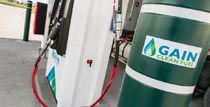 U.S. Gain announced a new renewable natural gas development project located in Springfield, Nebraska, which is producing much-needed clean fuel for the transportation industry, as well as a supply contract
U.S. Gain announced a new renewable natural gas development project located in Springfield, Nebraska, which is producing much-needed clean fuel for the transportation industry, as well as a supply contract
read more
for Southern California Gas Company’s (SoCalGas) natural gas fueling station network. Both projects will be impactful in the development and supply of biomethane across the country. As a vertically-integrated biomethane provider, U.S. Gain is diligently working with producers and developers on a multitude of landfill, agricultural and wastewater treatment biogas development projects – converting their waste to financially-rewarding, clean fuel. One of the most recent projects that U.S. Gain was involved in is the Sarpy County Landfill located in Springfield, Nebraska. This landfill will produce enough biomethane to fuel 117 Class 8 trucks daily, the equivalent of displacing more than 2.3 million gallons of diesel. “SoCalGas is excited to offer biomethane at many of our natural gas vehicle fueling stations from U.S. Gain,” said Jawaad Malik, vice president of Gas Acquisitions. “Renewable natural gas is an important tool in helping reduce greenhouse gas emissions that is why SoCalGas has committed to having 20% biomethane in our system by 2030.” Bryan Nudelbacher, director of business development for U.S. Gain, said that providing biomethane throughout the SoCalGas fueling network will substantially improve air quality for residents in Southern California. “The best feature of renewable natural gas is the ability to provide up to 125% well-to-wheel emission savings when used in transportation,” he added. “We look forward to supplying the cleanest fuel option to more fleets and stations in California, as well as the rest of North America.”
show less
Toyota and Australian Government begin pathway to hydrogen for mobility
The Australian Renewable Energy Agency (ARENA), an independent agency of the Australian federal government, will provide funding for Toyota Motor Corporation Australia Limited to start the transformation of part of its decommissioned car manufacturing plant
read more
in Altona Victoria into a renewable energy hub to produce green hydrogen for transport. The $7.4 million Toyota Australia Hydrogen Centre is part of a larger transformation planned for the former car manufacturing site where manufacturing ceased in 2017.
On behalf of the Australian Government, ARENA will provide $3.1 million towards the Toyota Australia Hydrogen Centre project. The Hydrogen Centre will include solar PV and battery storage to cover the incremental energy requirements for the production of renewable hydrogen through electrolysis and utilisation for both mobile and stationary applications. As an emission free fuel, hydrogen can also be used to power vehicles and help decarbonise Australia’s transport sector. The project will aim to demonstrate an end-to-end process for the hydrogen creation chain; from producing hydrogen through electrolysis to the compression and storage of hydrogen and electricity generation via hydrogen fuel cells. The Hydrogen Centre will also include an education centre and Victoria’s first commercial scale hydrogen vehicle refuelling station infrastructure on site to allow the refueling of hydrogen fuel cell vehicles. The project will produce at least 60 kg of hydrogen per day with on-site solar PV and battery storage to contribute to the incremental energy requirements of the whole site. ARENA Chief Executive Officer Darren Miller said Toyota’s Hydrogen Centre would demonstrate hydrogen as a viable fuel source for transport and as an energy storage medium.
Toyota Australia’s President and CEO Matt Callachor said: “Hydrogen has the potential to play a pivotal role in the future because it can be used to store and transport energy from wind, solar and other renewable sources to power many things, including vehicles like the Toyota Mirai Fuel Cell Electric Vehicle. “Right now, the biggest factor to the success of hydrogen being widely available is a lack of infrastructure. The sooner we move to a zero emission society the better, and Toyota is committed to making this a reality.”
Source: NGV Global
show less
Asturias and Enagás sign agreement to develop renewable energies
 The Regional Minister for Employment, Industry and Tourism of the Principality of Asturias Isaac Pola Alonso and the Chief Transformation Officer of Enagás Antón Martínez signed an agreement in Oviedo to develop projects for non-electric renewable energies such as biomethane and green hydrogen in Asturias.
The Regional Minister for Employment, Industry and Tourism of the Principality of Asturias Isaac Pola Alonso and the Chief Transformation Officer of Enagás Antón Martínez signed an agreement in Oviedo to develop projects for non-electric renewable energies such as biomethane and green hydrogen in Asturias.
read more
This collaboration protocol between the government of the Principality of Asturias and Enagás will allow the promotion of projects in areas such as the injection of these new gases into the grid, uses for sustainable mobility and the production of green hydrogen using renewable energy sources. The agreement is part of the goal of the government of Asturias to achieve energy savings and efficiency, reduce atmospheric emissions of CO2 and promote renewable energies. In this regard, the government of the region considers the effective development of energy infrastructure necessary in order connect facilities for renewable energy generation with points of consumption. Enagás is currently sponsoring different projects for the development of non-electric renewable energies, such as hydrogen and biomethane, as new solutions that are key to energy transition and in order to bring about a circular economy. The company is also working on initiatives for the use of natural gas in transport, essentially maritime and for heavy goods vehicles, in order to improve air quality. Enagás is one of the main supporters of sustainable energy and a pioneer in the promotion of natural gas in the Iberian Peninsula.
show less
Eni encourages Italian production of advance biomethane for vehicle use
Eni and the Italian Biogas Consortium (CIB) signed an agreement to promote the production of advanced biomethane from animal waste, agro-industrial byproducts and dedicated winter crops for use in the transport sector.
read more
The project also involves new opportunities for Consortium member companies by launching business initiatives which will be developed in partnership. A taskforce will be established and will meet periodically to assess and define the most efficient and appropriate opportunities for collaboration. The deal is a central component in Eni’s efforts to promote the principles of the circular economy in energy production. Part of the agreement is in-depth examination with the members of commercial and industrial initiatives through a system that starts from biogas, which is produced currently and already used to generate electricity and thermal energy, being refined so that it can be used as a fuel for road transport, in the form of CNG or LNG. Eni is targeting the collection of around 200 million cubic meters of biomethane, which can be produced by CIB members, through the consolidation of methane generated and produced in agricultural and livestock farming processes. The benefits will be lower atmospheric emissions and a more competitive primary sector. For Eni, it represents another step forward in the production of advanced biofuels and aligns with the transformation of the Venice and Gela bio-refineries. “The joint agreement with Eni demonstrates how biomethane, a particularly flexible molecule, is destined for an important role in the current energy transition,” stated Piero Gattoni, President of the CIB. “Thanks to the work of the Consortium to promote the integration of biogas with agriculture in these years, it has been possible to undertake this profitable exchange and aim towards the ambitious target of distributing no fewer than 200 million cubic meters of advanced biomethane, sustainably produced by Italian agricultural companies, by 2022.”
show less
Liverpool unveils project featuring 25 hydrogen buses & fueling station
The Liverpool City Region is set to be the first place in the North of England to trial hydrogen buses following a successful £6.4 million bid to the government’s Office for Low Emission Vehicles.
read more
The bid was put forward by a consortium led by industrial gases company BOC, and including the Liverpool City Region Combined Authority and Arcola Energy, working with bus-maker Alexander Dennis, and will be progressed in conjunction with Arriva and Stagecoach, as members of the city region’s Bus Alliance. The Liverpool City Region Hydrogen Bus Project will see the creation of a new hydrogen refueling station at the BOC plant in St Helens, which produces hydrogen for industrial customers in the region and further afield, and will potentially see up to 25 hydrogen–powered buses on the streets of the Liverpool City Region, emitting nothing but water from the exhaust pipe. This initiative will contribute to the city region’s plans both to improve air quality and work towards a zero carbon economy by 2040. The first bus trial is expected to take place in 2020, subject to agreement with the Bus Alliance. The new refueling station will initially deliver 500kg of hydrogen every day. Crucially, the project aims to demonstrate the commercial viability of a model that installs refuelers for high-use fleets to develop a network for future use by passenger cars and other vehicles.
show less






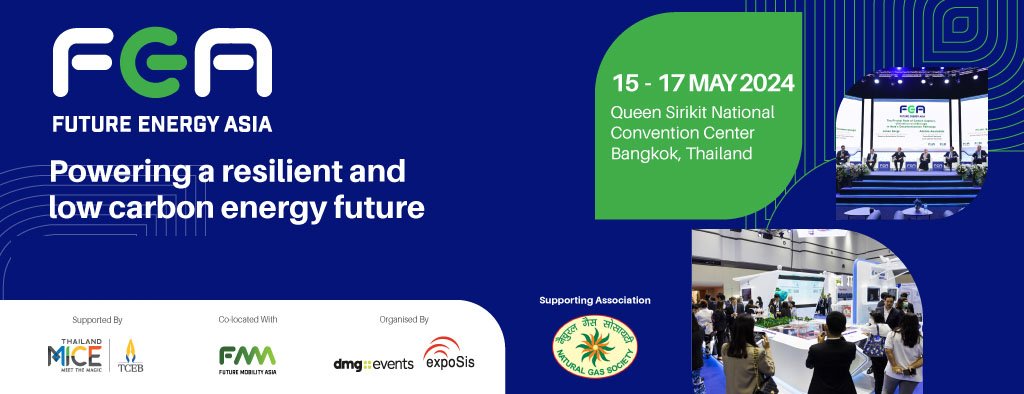



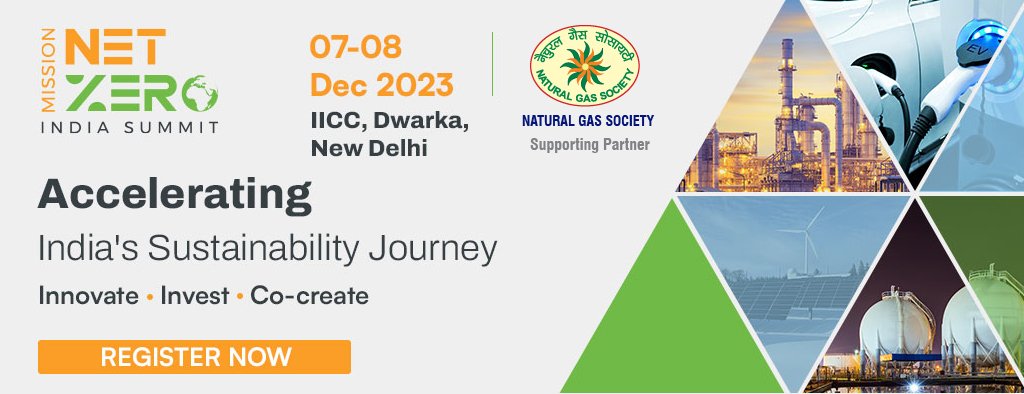
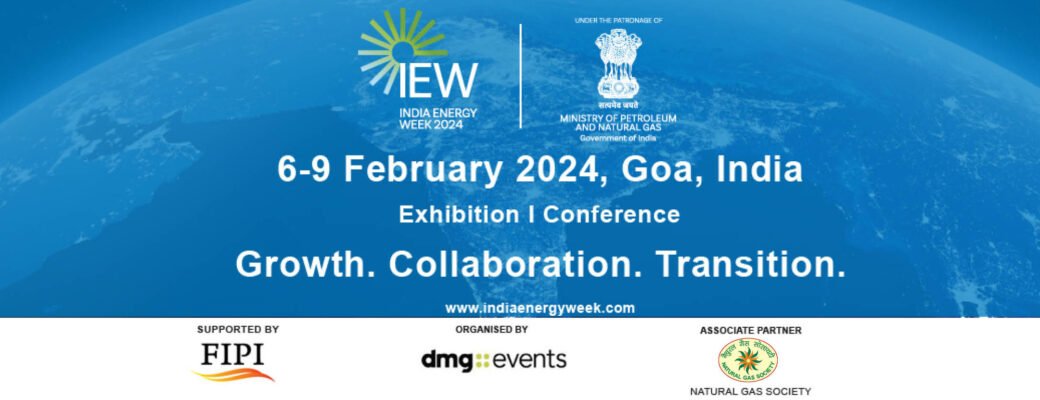

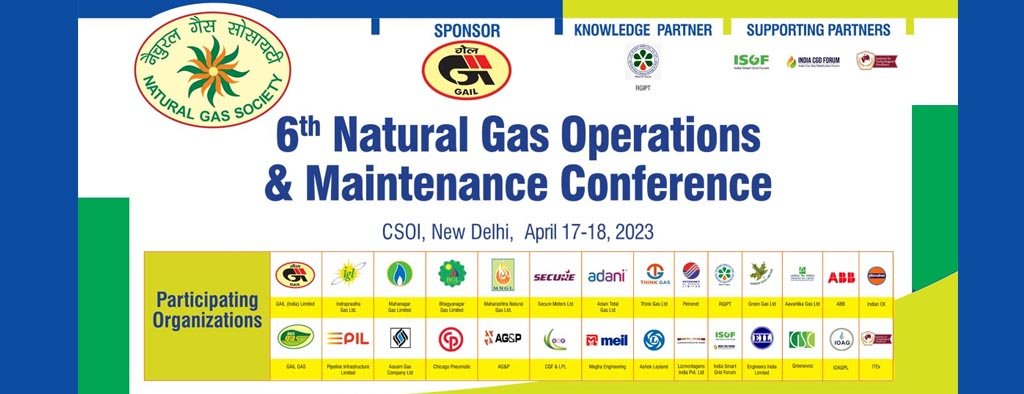

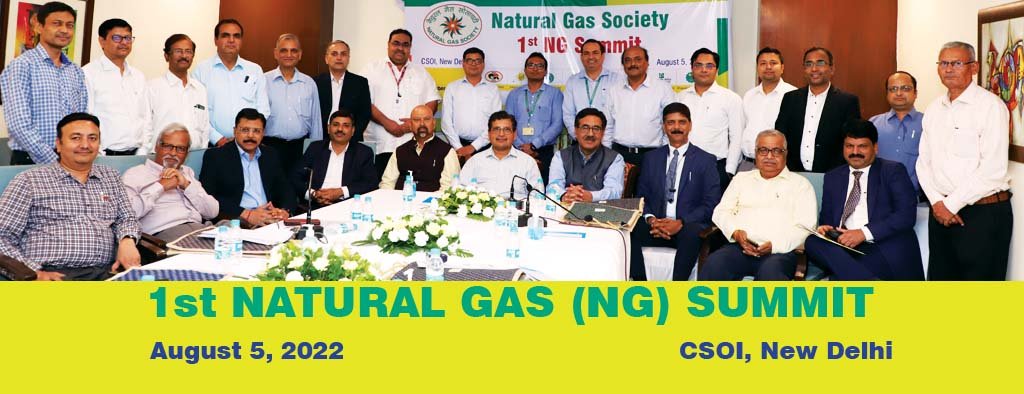
 The supply of (CNG) began at two petrol pumps on Bypass Road and Rukanpura in Patna on Tuesday, April 9, two days after the inauguration of the city gas distribution (CGD) system by Prime Minister.
The supply of (CNG) began at two petrol pumps on Bypass Road and Rukanpura in Patna on Tuesday, April 9, two days after the inauguration of the city gas distribution (CGD) system by Prime Minister. About 5,000 households here will get piped natural gas (PNG) connections by year-end, claims a company tasked with the job. The work has already started with three households in Sector 4 here getting the connection.
About 5,000 households here will get piped natural gas (PNG) connections by year-end, claims a company tasked with the job. The work has already started with three households in Sector 4 here getting the connection. China’s natural gas demand is set to grow by 14% in 2019 amid a huge government push to spur consumption of the fuel, a senior industry executive said, requiring the nation to import huge amounts of liquefied natural gas (LNG).
China’s natural gas demand is set to grow by 14% in 2019 amid a huge government push to spur consumption of the fuel, a senior industry executive said, requiring the nation to import huge amounts of liquefied natural gas (LNG).